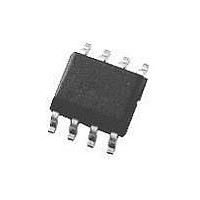LMC6041AIM National Semiconductor, LMC6041AIM Datasheet - Page 11

LMC6041AIM
Manufacturer Part Number
LMC6041AIM
Description
IC, OP-AMP, 75KHZ, 0.02V/µs, SOIC-8
Manufacturer
National Semiconductor
Datasheet
1.LMC6041AIMNOPB.pdf
(15 pages)
Specifications of LMC6041AIM
Op Amp Type
Low Power
No. Of Amplifiers
1
Bandwidth
75kHz
Slew Rate
0.02V/µs
Supply Voltage Range
4.5V To 15.5V
Amplifier Case Style
SOIC
No. Of Pins
8
Lead Free Status / RoHS Status
Contains lead / RoHS non-compliant
Available stocks
Company
Part Number
Manufacturer
Quantity
Price
Company:
Part Number:
LMC6041AIM
Manufacturer:
NS
Quantity:
243
Part Number:
LMC6041AIM
Manufacturer:
NS/国半
Quantity:
20 000
Typical Single-Supply Applications
The extremely high input impedance, and low power con-
sumption, of the LMC6041 make it ideal for applications that
require battery-powered instrumentation amplifiers. Ex-
amples of these type of applications are hand-held pH
probes, analytic medical instruments, magnetic field detec-
tors, gas detectors, and silicon based pressure transducers.
The circuit in Figure 7 is recommended for applications
where the common-mode input range is relatively low and
the differential gain will be in the range of 10 to 1000. This
two op-amp instrumentation amplifier features an indepen-
dent adjustment of the gain and common-mode rejection
trim, and a total quiescent supply current of less than 28 µA.
To maintain ultra-high input impedance, it is advisable to use
ground rings and consider PC board layout an important part
of the overall system design (see Printed-Circuit-Board Lay-
(V
FIGURE 7. Two Op-Amp Instrumentation Amplifier
+
= 5.0 V
DC
)
FIGURE 8. Low-Power Two-Op-Amp Instrumentation Amplifier
FIGURE 9. Low-Leakage Sample and Hold
01113612
11
out for High Impedance Work). Referring to Figure 7, the
input voltages are represented as a common-mode input
V
Rejection of the common-mode component of the input is
accomplished by making the ratio of R1/R2 equal to R3/R4.
So that where,
A suggested design guideline is to minimize the difference of
value between R1 through R4. This will often result in im-
proved resistor tempco, amplifier gain, and CMRR over tem-
perature. If RN = R1 = R2 = R3 = R4 then the gain equation
can be simplified:
Due to the “zero-in, zero-out” performance of the LMC6041,
and output swing rail-rail, the dynamic range is only limited to
the input common-mode range of 0V to V
at room temperature. This feature of the LMC6041 makes it
an ideal choice for low-power instrumentation systems.
A complete instrumentation amplifier designed for a gain of
100 is shown in Figure 8. Provisions have been made for low
sensitivity trimming of CMRR and gain.
CM
plus a differential input V
01113614
01113613
D
.
S
–2.3V, worst case
www.national.com






